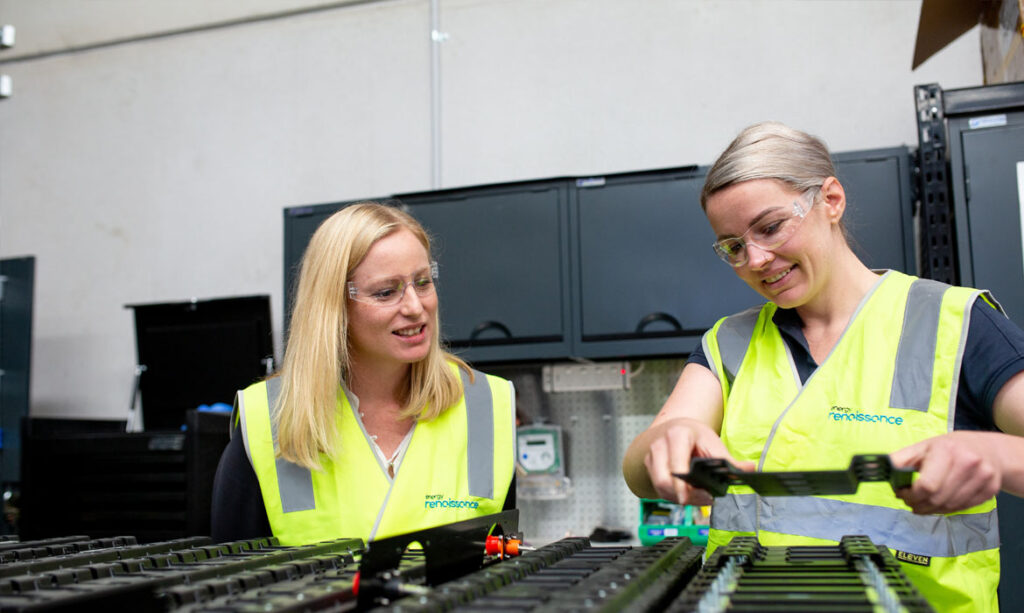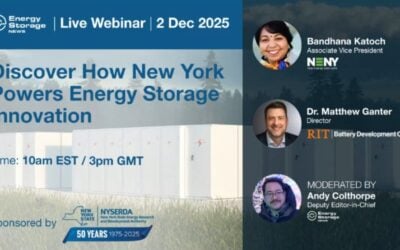
Pilot production has been established by an Australian company aiming to manufacture lithium-ion battery storage solutions specifically designed for hot climates.
Energy Renaissance wants to manufacture batteries and battery systems for stationary storage and transport applications from a gigafactory site in Hunter, New South Wales (NSW), Australia. The company wants to serve markets in its home country as well as export to Asia.
In collaboration with the Australian national science agency CSIRO, Energy Renaissance has developed a proprietary plug and play battery solution based on prismatic format cells called superPack and superRack.
Coupled with a CSIRO-developed battery management system (BMS), they form superStorage, Energy Renaissance’s battery energy storage system (BESS), which it is claimed will change the way batteries are deployed in hotter and humid countries.
Try Premium for just $1
- Full premium access for the first month at only $1
- Converts to an annual rate after 30 days unless cancelled
- Cancel anytime during the trial period
Premium Benefits
- Expert industry analysis and interviews
- Digital access to PV Tech Power journal
- Exclusive event discounts
Or get the full Premium subscription right away
Or continue reading this article for free
Another Australian government-established group, the non-profit Advanced Manufacturing Growth Centre (AMGC) announced last week that ‘Apollo,’ a pilot production plant with up to 4MWh monthly battery manufacturing capacity, has gone online in the Hunter region village of Tomago.
From there, Energy Renaissance wants to prove out the technology and use Apollo’s pilot production as a step towards scale-up and the eventual development and construction of Renaissance One, which would initially have 300MWh annual production capacity and scale up to 5.3GWh.
Energy-Storage.news first covered the company back in 2017, when Energy Renaissance said it planned to build Renaissance One in Australia’s Northern Territory, with 1GWh annual production capacity.
However, when we picked back up the thread three years later in 2020, Hunter in NSW had been selected instead. Energy Renaissance managing director Mark Chilcote said at the time that reasons included the abundance of solar energy in Hunter as well as other natural resources and availability of skilled workers.
‘92% domestic content’
Australia has a lot of the raw materials used in the production of batteries but currently either exports them unprocessed, mostly to China, or has left them in the ground. AMGC pointed out that Energy Renaissance products could be built with 92% of their content sourced domestically in Australia.
AMGC also said that with the integration of CSIRO’s Renaissance BMS, the company’s products monitor, benchmark and self-diagnose battery performance, although human intervention is also possible.
Energy Renaissance claimed its superStorage design amplifies and expands heat mitigation at systems level. At larger configurations it can house up to 1.8MWh of storage capacity per 20ft enclosure, the company said.
Over the first five years of operation Renaissance One could generate around AU$97.5 million (US$66.21 million) revenues, creating more than 700 jobs even at its initial 300MWh yearly production capacity.
Very large volumes of lithium battery manufacturing capacity are coming online globally in the next few years, particularly in China and in Europe. While most of those volumes are expected to serve the transport industry, factories producing cells and systems for both EVs and BESS or dedicated to BESS are rarer.
China is however expected to bring online more than 200GWh annual production of cells specifically for BESS by 2025, according to market intelligence group Clean Energy Associates. What is claimed to be the first “pure homegrown” battery gigafactory in the US recently came online in Upstate New York, through iM3NY, serving both EV and BESS sectors. Currently at the quality assurance stage, that project could eventually ramp up to 38GWh annual production.





